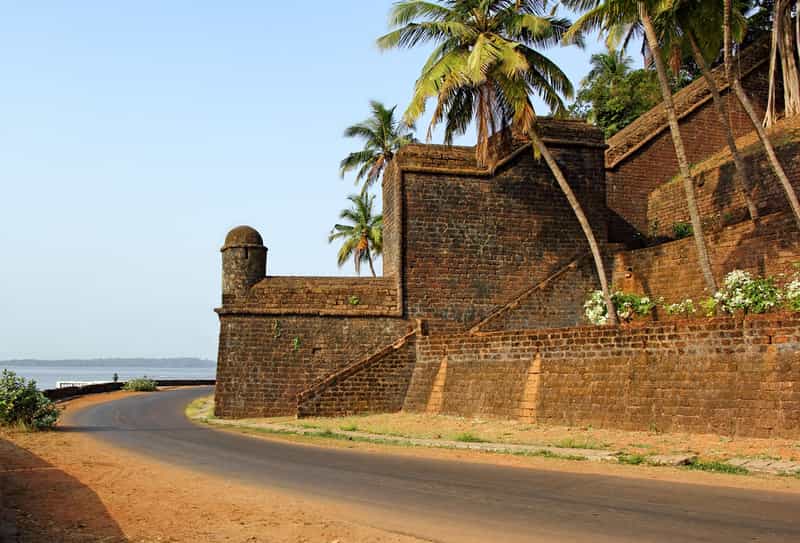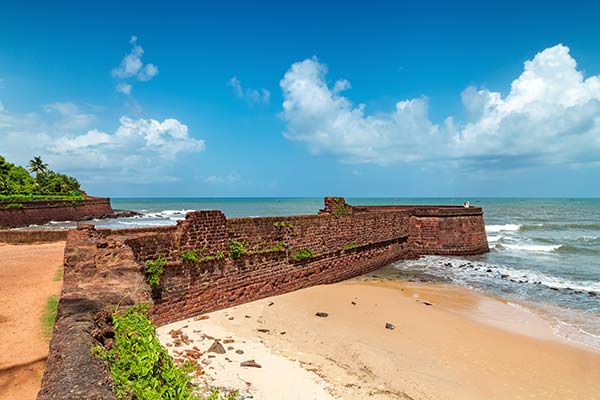
Goa, often celebrated for its beaches and vibrant culture, also holds a rich tapestry of history reflected in its majestic forts. These forts, scattered across the state, are remnants of a time when Goa was a strategic hub for trade and defense. Each fort tells a story—of battles fought, rulers who reigned, and a heritage that has survived centuries. Exploring these forts offers a unique glimpse into Goa’s past and a chance to appreciate its architectural marvels.
Aguada Fort: A Coastal Sentinel
Aguada Fort, perched on the SinQem River’s mouth, is one of Goa’s most iconic forts. Built in the early 17th century by the Portuguese, it served as a defensive stronghold against Dutch and Maratha invasions. The fort features a lighthouse that guided ships navigating the Arabian Sea and a freshwater spring that supplied water to passing vessels, giving the fort its name “Aguada,” meaning water. Visitors today can explore its massive bastions, dungeons, and panoramic views of the coastline, imagining the strategic battles that once took place.
Chapora Fort: A Hilltop Watchtower
Chapora Fort, overlooking the Chapora River in North Goa, gained popularity not only for its strategic importance but also for its cinematic fame. Originally built by the Adil Shahi dynasty and later fortified by the Portuguese, this fort offered a vantage point to monitor enemy movements along the river. Today, the fort draws history enthusiasts and photographers alike, providing stunning sunset views and a sense of stepping back in time.
Reis Magos Fort: Fortress of the River
Situated on the northern bank of the Mandovi River, Reis Magos Fort is a fine example of Portuguese military architecture. Restored recently, it now serves as a cultural center showcasing exhibitions, art, and local history. The fort played a key role in defending the river entry to the capital, Panaji, and its strategic location allowed colonial rulers to monitor trade routes. Its walls, ramparts, and bastions tell stories of vigilance, conflict, and colonial administration.
Terekhol Fort: Guardians of the North
Terekhol Fort, located at the northern tip of Goa near the Maharashtra border, was constructed in the 17th century to protect against Maratha invasions. Overlooking the Arabian Sea, the fort has witnessed changing rulers and the rise and fall of empires. Today, it has been converted into a heritage hotel, allowing visitors to experience historical architecture while enjoying modern amenities. The blend of history and hospitality provides a unique perspective on Goa’s coastal defenses.
Chandor and Corjuem: Lesser-Known Gems
Beyond the well-known forts, Goa houses smaller forts like Chandor and Corjuem that hold immense historical significance. Chandor Fort, in South Goa, showcases remnants of Portuguese influence and local Maratha resistance. Corjuem Fort, located on the island of Corjuem in North Goa, features a scenic moat and rustic stone architecture, often overlooked by tourists yet rich in history and tales of bravery.
Preserving Heritage
These forts are more than just stone structures; they are symbols of Goa’s resilience, strategic importance, and cultural fusion. Restoration efforts by the Archaeological Survey of India and local authorities aim to preserve these monuments for future generations. Visiting these forts allows travelers to connect with Goa’s layered history while enjoying panoramic views, architecture, and tales of battles that shaped the region.
Final Thoughts
Goa’s historic forts represent the state’s storied past and architectural ingenuity. From coastal sentinels to hilltop watchtowers, each fort narrates a tale of defense, strategy, and cultural interplay. Exploring these forts is a journey through time, offering insight into Goa’s heritage beyond its beaches, nightlife, and festivals.


